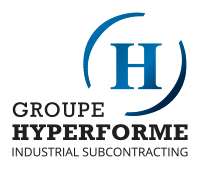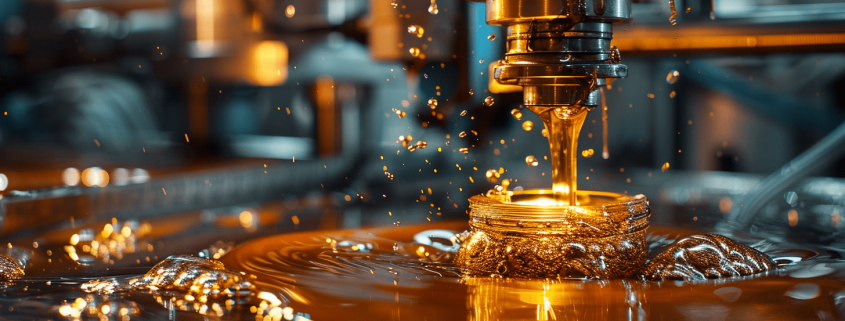ACHIEVING DURABLE AND BEAUTIFUL FINISHES: HOW CAN THE QUALITY OF E-COATING BE TESTED AND ASSURED?
The application of protective coatings plays a pivotal role in preserving the integrity of various components, especially in demanding sectors like the automotive and aerospace industries. Among these coatings, E-Coating, or electrocoating, has gained prominence for its exceptional corrosion resistance, aesthetic appeal, and environmental advantages.
To guarantee the sustainability and effectiveness of E-coating, stringent quality control measures, testing methods, and adherence to industry standards are imperative. In this article, we explore the E-Coating process as well as the quality control measures, testing methods, and standards that ensure sustainability and unparalleled effectiveness.
Cutting-Edge Industrial Paint Solutions: Understanding the E-Coating Process
In essence, the E-coating process is a meticulous blend of chemistry and electrical engineering, culminating in a protective coating that surpasses traditional methods in terms of both performance and longevity. The uniformity achieved through this process not only enhances the visual appeal of coated components but also ensures their resilience in the face of corrosive challenges. This sophisticated industrial paint application method offers distinct advantages for a wide range of coating materials and applications. Let’s delve into the intricacies of this process to understand its nuances!
Immersion in Water-Based Solutions
The process of E-coating begins with the immersion of components in a meticulously formulated water-based solution. This solution is not merely water; it comprises a carefully blended concoction of chemicals that contribute to the effectiveness and durability of the coating. These chemicals often include binders, pigments, and other additives crucial for achieving the desired properties in the final coating.
Application of Electrical Current
Once the components are submerged in the solution, the application of an electrical current becomes the catalyst for the coating transformation. This electrochemical process is integral to the success of E-coating. The electrical current induces a reaction within the solution, causing the charged particles to migrate and adhere to the metal surfaces. This phenomenon leads to the formation of a uniform and tightly bonded coating on the entire surface of the immersed components.
Formation of Uniform Coating Layer
The culmination of the E-coating process results in the creation of a uniform coating layer. Unlike traditional coating methods, E-coating ensures consistent coverage even on intricate geometries and hard-to-reach areas. The uniformity of the coating is vital not only for aesthetic appeal but also for providing superior protection against corrosion.
Superior Corrosion Protection
The primary objective of an E-coating solution is to shield metal surfaces from corrosion, and it excels in this regard. The uniform coating acts as a robust barrier, creating a protective shield against corrosive elements present in various environments. This attribute is particularly crucial for components used in industries such as automotive and aerospace, where exposure to harsh conditions is commonplace.
How Does the E-Coating Process Work?
Key Advantages of E-Coating
Unlocking the potential of E-coating reveals a host of advantages that set it apart as a superior choice in the realm of industrial coatings. Let’s explore the key benefits that make E-coating a standout solution.
Unmatched Corrosion Resistance
One of the standout features of E-coating is its unparalleled ability to resist corrosion. The uniform coating layer acts as a robust barrier, shielding metal surfaces from the corrosive effects of moisture, chemicals, and other environmental factors. This makes E-coating an ideal choice for components exposed to challenging conditions, ensuring longevity and reliability.
Protection Against Harsh Environmental Conditions
E-coating goes beyond standard protective measures by offering a shield against a spectrum of harsh environmental conditions. Whether it’s extreme temperatures, varying humidity levels, or exposure to corrosive substances, E-coated components demonstrate resilience. This makes them well-suited for industries where components often operate in demanding and unpredictable environments.
Excellent Coverage of Complex Geometries
Traditional coating methods often struggle to provide consistent coverage on intricate and complex geometries. E-coating, however, excels in this aspect. Its ability to uniformly cover surfaces, regardless of the intricacies of the design, ensures that every nook and cranny receives the necessary protective layer. This feature is particularly advantageous in industries where components come in diverse shapes and sizes.
Coating Hard-to-Reach Areas
E-coating doesn’t shy away from challenges posed by hard-to-reach areas. The immersion process, coupled with the electrochemical reaction, ensures that even areas that are conventionally difficult to coat receive the same level of protection as exposed surfaces. This capability is a game-changer in industries where comprehensive coverage is non-negotiable for optimal performance and durability.
Ideal for Various Industrial Projects
The versatility of E-coating makes it an ideal choice for a myriad of industrial projects. Whether it’s automotive components with intricate designs or aerospace parts exposed to extreme conditions, E-coating proves its efficacy across diverse applications. Its ability to adapt to different materials and geometries underscores its significance in the modern industrial landscape.
Common Applications of E-Coating
These diverse applications underscore the versatility and effectiveness of E-coating across a broad spectrum of industries, contributing to the durability and longevity of coated components:
- Automotive Industry: Automotive components such as chassis, brackets, and frames benefit from E-coating to withstand harsh road conditions and environmental exposure.
- Aerospace Industry: Critical aerospace components, including aircraft parts and structures, rely on E-coating to ensure protection against corrosion in demanding flight conditions.
- Electronics Industry: Circuit boards and electronic components benefit from E-coating to guard against environmental factors such as moisture and chemical exposure.
- Metal Fabrication: Various metal fabrication projects, including metal structures, panels, and decorative elements, utilize E-coating for durable and uniform protection.
- Outdoor Furniture: Patio furniture, playground equipment, and other outdoor structures utilize E-coating to maintain aesthetic appeal and withstand exposure to the elements.
- Medical Equipment: Components of medical devices and equipment are often E-coated for corrosion resistance, ensuring reliability and longevity in healthcare settings.
- Marine Applications: Boats, ship components, and marine equipment utilize E-coating to protect against the corrosive effects of saltwater and atmospheric conditions.
- Appliance Manufacturing: Household appliances such as washing machine frames, dishwasher racks, and oven components benefit from E-coating for corrosion resistance and durability.
- Metal Furniture: Industrial and commercial metal furniture, including shelving units and storage systems, often undergo E-coating to enhance longevity and maintain a polished appearance.
- Construction and Architecture: Structural steel elements in buildings and architectural structures are E-coated to resist corrosion, especially in outdoor and coastal environments.
- Power Transmission Equipment: Utility poles, electrical transmission towers, and related equipment benefit from E-coating to withstand exposure to weather conditions and ensure long service life.
- Railroad Components: Railway components, such as railings and structural elements, undergo E-coating to protect against corrosion caused by exposure to various weather conditions.
- Metal Containers and Tanks: E-coating is applied to metal containers, tanks, and drums to prevent corrosion and ensure the integrity of the stored contents.
- Etc.
What Types of Industries Commonly Use Subcontracting?
Ensuring Excellence in Every Layer: E-Coating Quality Control Measures
E-coating relies on robust quality control measures to guarantee the sustainability and effectiveness of the coating process. Let’s go through the key considerations regarding quality control measures, testing, and standards in E-coating:
What measures are in place to ensure a uniform coating thickness?
Employing advanced technologies like the LayIR-CHECK system ensures consistent and uniform coating thickness, adhering to high-quality standards. This is crucial for both aesthetic appeal and protective properties.
How is the adhesion between the coating and the metal substrate tested?
Rigorous adhesion testing methods ensure a strong bond between the E-coating and the metal substrate, meeting performance requirements even in critical components.
What standards are followed to maintain consistent coating thicknesses?
Adhering to industry standards, such as those set by ASTM International, guarantees that E-coating processes maintain consistent coating thicknesses. Compliance ensures uniformity across coated surfaces.
Are there specific measures to assess the performance of E-coating in harsh environments?
E-coated products undergo comprehensive testing in various environmental conditions, simulating extreme situations. This includes exposure to corrosive elements, temperature variations, and outdoor environments.
How is the effectiveness of the E-coating process ensured in terms of cost and time efficiency?
Evaluating operational costs and cycle time intervals is crucial for cost-effective E-coating processes. Balancing efficiency with quality ensures optimal performance without compromising sustainability.
What role does training play in maintaining consistent quality in E-coating?
A well-trained service team equipped with practical thermography training ensures that E-coating processes meet the highest quality standards. Training courses contribute to the skill set required for consistent and resilient finishes.
How are thicker films and uniform film thickness controlled during the E-coating process?
Employing advanced systems like LayIR-CHECK allows precise control over film thickness, ensuring not only thicker films when necessary but also maintaining a uniform film thickness across coated surfaces.
Are there specific measures in place to address complex geometries and hard-to-reach areas?
Utilizing spray coatings and immersion techniques during the E-coating process addresses challenges posed by complex geometries and hard-to-reach areas, ensuring uniform coverage.
What steps are taken to ensure a pleasing finish in E-coated products?
The use of high-quality coating materials and stringent process controls contributes to achieving a pleasing finish on E-coated products, meeting the aesthetic requirements of various industries.
How is the E-coating process optimized for specific industries and components?
E-coating processes are tailored to meet the specific needs of industries and critical components through project analysis, ensuring the coating is the preferred choice for manufacturers.
Enhancing E-Coating: The Role of Contract Manufacturing Professionals
When it comes to E-coating, the expertise of contract manufacturers contributes significantly to achieving higher efficiency, quality, and overall excellence in the protective coating process. Here’s how:
- Industry-Specific Knowledge: Contract manufacturing professionals bring industry-specific knowledge, grasping the unique requirements of various sectors such as automotive, aerospace, and electronics. This insight allows them to tailor E-coating processes to meet specific needs.
- Process Optimization: Through continuous evaluation and refinement, contract manufacturing professionals optimize the E-coating process to enhance efficiency. This involves streamlining workflows, minimizing waste, and improving cycle times without compromising on quality.
- Advanced Technologies: Staying abreast of technological advancements, contract manufacturing professionals integrate state-of-the-art tools and equipment into the E-coating process. Advanced systems like the LayIR-CHECK system enable precise control over coating thickness, ensuring uniformity.
- Stringent Testing Protocols: Contract manufacturers implement rigorous testing protocols to ensure the quality and reliability of E-coated products. This includes adhesion testing, environmental testing, and other measures to meet or exceed industry standards.
- Customization and Flexibility: Recognizing that each client has unique requirements, contract manufacturing professionals offer customizable solutions. This flexibility allows them to adapt E-coating processes to specific project demands, ensuring client satisfaction.
- Strategic Partnerships: Contract manufacturing professionals often form strategic partnerships with industry leaders, allowing them to stay at the forefront of technological advancements and benefit from shared expertise.
- Continuous Improvement Initiatives: Recognizing that improvement is an ongoing process, contract manufacturing professionals implement continuous improvement initiatives. Regular evaluations and feedback mechanisms ensure that the E-coating process evolves to meet the ever-changing demands of the industry.
What Are The Advantages Of Industrial Subcontracting?
Groupe Hyperforme: Excellence in Industrial Subcontracting
Explore the unparalleled expertise and services offered by Groupe Hyperforme to elevate your industrial subcontracting experience. Renowned for its turnkey solutions, Groupe Hyperforme specializes in a diverse range of services, including:
- COMPOSITE AND PLASTICS
- ELECTROMECHANICS
- INDUSTRIAL PAINT APPLICATION
- METAL LASER CUTTING
- RUBBER
- WOOD TRANSFORMATION
Whether you operate in medical, transportation, high technology, agribusiness, robotics, industrial, military, construction, or architectural sectors, Groupe Hyperforme caters to your unique needs, delivering superior performance and quality.






